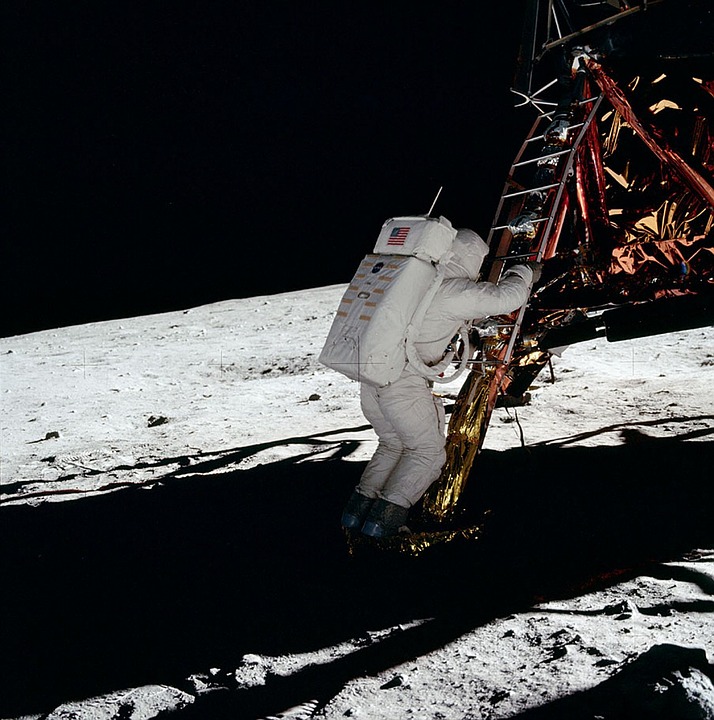
The Moon Shot
It's been about 55 years since the first Moon landing.

So, how did we get there? The road is full of genius and failure, good guys and bad guys.
An epic tale.
O, Pioneers
The first to invent rockets were the Chinese. The first rockets were something like today’s fireworks.

Not much changed for centuries; even during the war of 1812 and the “rockets red glare.” Yet three men would take rocketry to whole new heights.
Robert Goddard
Robert Goddard was born in 1882. His interest in space began as a boy after reading HG Well's War of the Worlds and he envisioned going to Mars.

Early in his career he publicly wrote about using rockets to reach the Moon and planets, but his ideas were criticized. Being shy by nature he would not speak out publicly about this again. Still, in 1926, he developed the first rocket using liquid fuel, not gunpowder, and really began the development of the rocket.
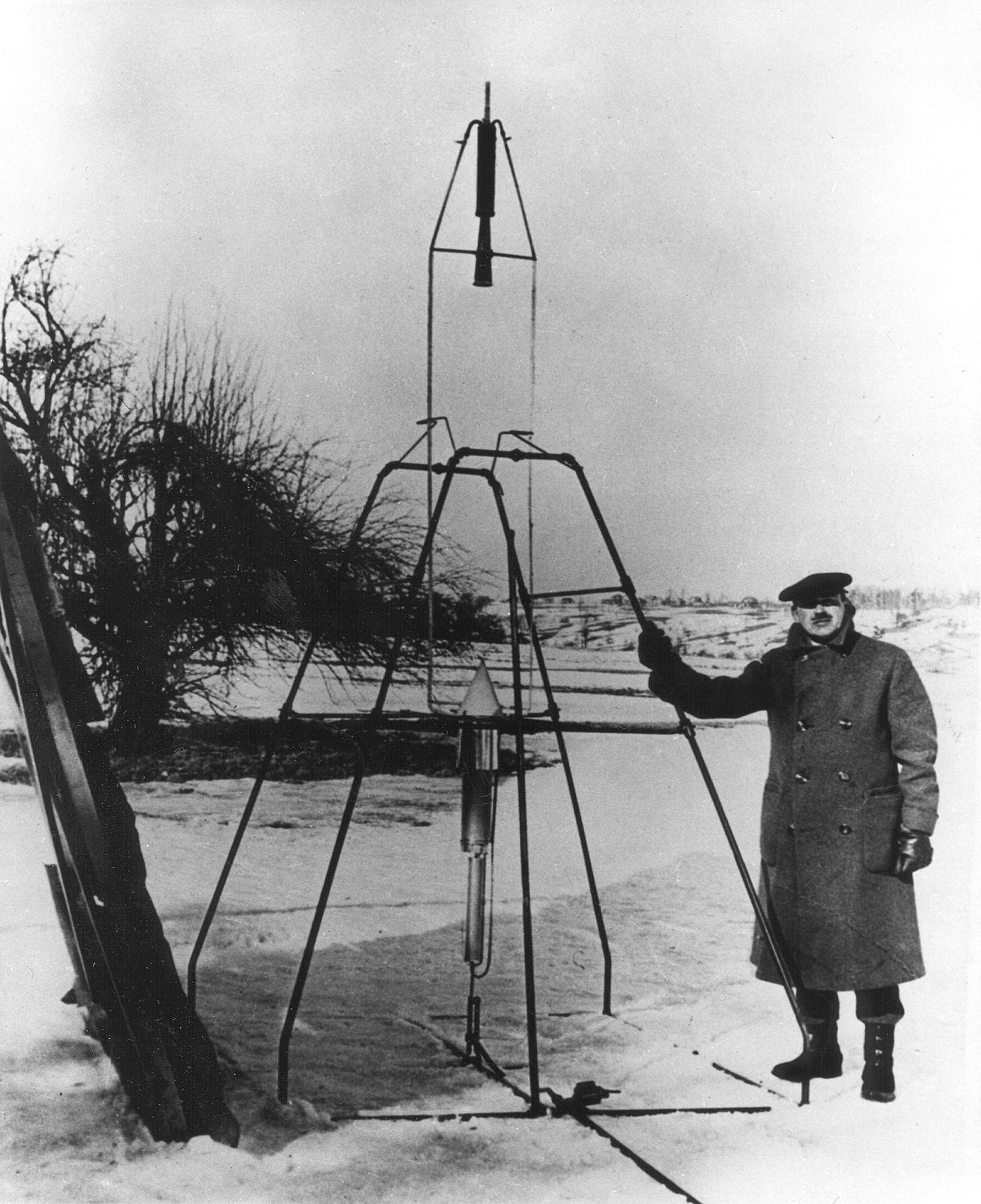
Sergei Korolev
Sergei was born in Ukraine in 1906. Originally trained as a carpenter, he later expanded into designing gliders and developed an interest in rocketry.

Sergei's life took a turn for the unpleasant in 1938 during Stalin's great purge when he was picked up by the Soviet state police and would spend the next 6 years in prison as a political prisoner. While a prison he began working on rockets after Germany invaded the Soviet Union in 1941.
Later freed from prison, he designed the Soviet Union's first long-range missile.
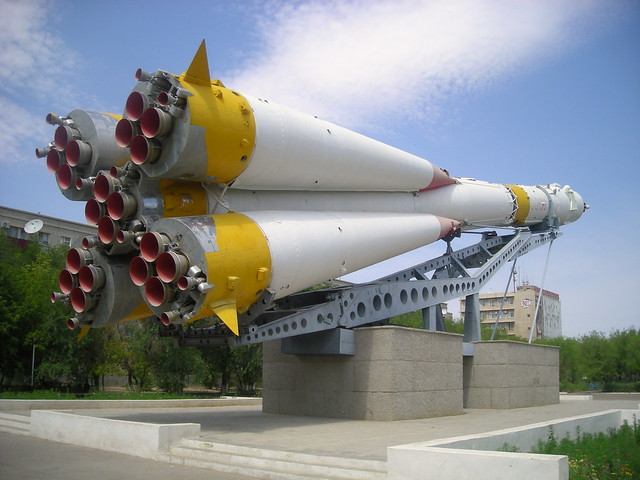
Wernher von Braun
Wernher von Braun was born in Germany in 1912. As a boy, he learned to play the piano and cello and for a time considered becoming a composer. Yet as he grew up the allure of space travel caught hold on him and he ended up pursuing rockets.
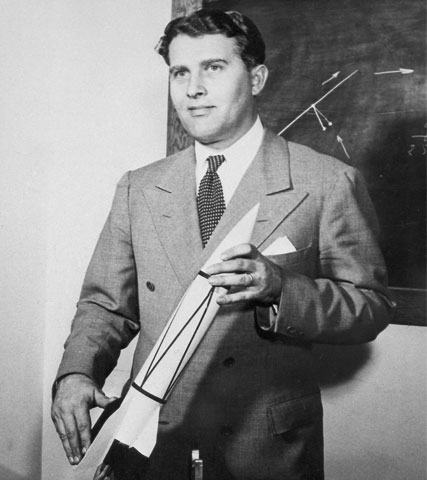
The German military under Hitler developed a rocket program with Wernher in charge, yet the massive project did not see any results until 1944 (Video of German rocket testing). Too inaccurate for use in battle, Hitler chose to have it deliver its 1 ton of explosives on London as revenge for allied bombings.

These rocket attacks caused a lot of misery but did not change the outcome of the war. At the end of the war, Wernher and most of his team surrendered to the Americans near Oberammergau Germany in Bavaria. They were then brought to the United States to continue their rocket work in the deserts of New Mexico.
Amusing story: There is a story told about their time in New Mexico. The joke was that they were the only German unit to invade the U.S. and get as far as New Mexico.
This joke was later expanded when a rocket mishap sent it over El Paso to crash in a cemetery in Mexico. Now the unit was the only German unit to attack Mexico from a base in the United States.
The race is on
Everything changes in October 1957. The Soviet Union, under the direction of Korolev, sent up the first satellite, Sputnik.
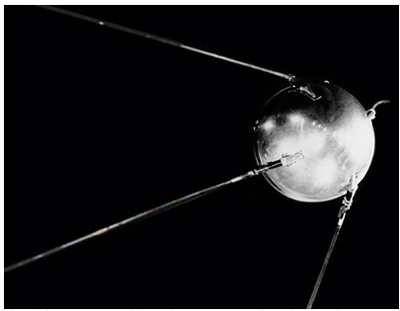
It many ways, Sputnik was very simple. A small ball contained a radio sending out “beeps” every second or so.
Pretty boring, right?
Not at all, because it meant so much more.
This was the Cold War, a time when the United States and the Soviet Union were each telling the world their way of life was better. Sputnik was a big Soviet commercial in the sky.
In a more practical direction, any nation that could launch objects into orbit could park nuclear bombs there, ready to be dropped at a moment's notice and with very little warning.
Later the Soviets sent a second Sputnik, this one having a passenger; a stray dog named Laika was given a one-way ticket into space. She lived in space for only a couple of hours.
The next year the United States, under the direction of Wernher von Braun, starting sending rockets up as well.
The race was on!
The Moon or Bust!
The next step, for both the United States and the Soviet Union, was to get somebody in orbit. In the United States a new agency was formed, the National Aeronautics and Space Administration (NASA). Their first job was called Man in Space Soonest, or MISS. Frankly, this abbreviation does not seem like it could inspire confidence.
Be that as it may, they went to work.
The wings of Mercury
NASA selected 7 test pilots to be the first astronauts in a series of flights called project Mercury. They are, in order of the picture below, left to right:
Scott Carpenter
Gordon Cooper
John Glenn
Gus Grissom
Wally Schirra
Alan Shepard
Deke Slayton

The Mercury 7

The Mercury capsule
The goals for Mercury were simple:
Get the astronauts into space.
Learn how the weightless conditions of orbit affect human health.
Learn how to move the craft around in orbit.
It was school-time, and everyone was the students, learning everything for the first time. The first American in space was Alan Shepard. His flight was called sub-orbital, he went into space but did not travel fast enough for orbit. A later astronaut, John Glenn, was the first American to get into orbit.
Meanwhile, there were the Soviets. Before Alan Shepard could fly, the Soviets put a cosmonaut, Yuri Gagarin, into orbit.
Raising the bar
Between Alan Shepard and John Glenn, president John Kennedy challenged both countries to a race – send a man to the Moon and return them safely before the end of the decade. (Check out a video of the challenge here.)
This challenge came after some debate. Some of Kennedy's advisers thought to challenge the Soviets to a space race would be foolish as they were already ahead. Others wanted to race to Mars. In the end, the Moon seemed like a good goal. It wasn't a crazy race across the solar system, and both sides would need to develop new rockets, giving the United States a more even chance.
Gemini
Project Gemini built on Mercury. The ship itself was really nothing more than a souped-up version of Mercury, extended to fit 2 people (hence the name, Gemini, for twins constellation).

And boy was it cramped!
The astronauts called it the “Gus-mobile,” since the astronaut Gus Grissom was the only one who seemed to be able to get in and out without too much difficulty.
The goal of Gemini? To fill in the gaps needed to be able to go to the Moon.
Can an astronaut say in space for weeks and be healthy?
Can two spaceships in orbit safely connect together?
Can an astronaut go outside into space and "spacewalk?"
Conditions on board Gemini were anything but pleasant; no room to move around, no way to change clothes – you could take off your helmet and gloves and that's all. And boring! The astronaut Pete Conrad of Gemini 11 described his 3 days in orbit as "garbage can." Pity then the crew of Gemini 7 that had to spend 2 whole weeks in orbit!
But the lessons had been learned. All that was lacking was a way to get to the Moon.
Apollo
While astronauts were risking their lives learning how to manage in space, engineers were creating a rocket strong enough to take 3 men to the Moon.
And they did. A big one!
The Saturn V (roman numeral V for five) rocket, for my money the most impressive rocket to date.


Von Braun by the Saturn V engines
Imagine a rocket about as tall as the Statue of Liberty, filled with explosive liquid! Developing it was a rough process, as early NASA fail films show.
Early on, the Apollo program had a setback. A spark during a routine ground test caused a fire in the pure oxygen air in the capsule. Fire engulfed the capsule and its three astronauts, Gus Grissom, Ed White, and Roger Chaffee were all killed.
This was a great tragedy! But lessons were learned. Apollo would fly again from the ashes, now a much better ship.
Here are some of the following missions.
Apollo 7 – Test flight. The ship worked great.
Apollo 8 – First flight to Moon itself. It arrived at the Moon on Christmas Eve of 1968. The crew of Apollo 8 had a Christmas message for the people of the Earth, including a portion of the creation account in Genesis.
Apollos 9 and 10 – Testing the lunar module, the craft going down close to the Moon's surface, and practicing for the landing.

Depiction of the lunar lander on the Moon's surface
All that was lacking now, was the real thing.
Apollo 11
Apollo 11 launched off on July 16, 1969, headed for the Moon. The commander was Neil Armstrong. He and “Buzz” Aldrin would do the landing. A third member, Michael Collins, would stay in orbit inside the command module during the landing.

The trip took 4 days each way, bringing the rocket to the Moon on July 20, 1969. Armstrong and Aldrin climbed into the lunar module and began their descent to the Moon's surface.

On the way down, several alarms sounded, one showing that the ship computer was being overwhelmed. But also the astronauts discovered that the computer was taking them away from their soft landing spot and towards a field of boulders. Taking over, the astronauts guided the ship down and make a soft landing with only seconds of fuel left.
The “Eagle had landed.”

Millions of people around the world celebrated the landing, but none were more relieved than the ground crew. Upon hearing of their landing a most most relieved man at Houston responded “there are a bunch of guys about to turn blue down here, but they're breathing again.”
The Moon had its first visitors.

The Moon shot was a huge, expensive project. But was it a waste? Consider that it came during the violent time of the late 60's – a time when several groups were arguing and fighting with each other. For just a few days at least, the world came together to see something unimaginably huge and out of this world. Even the Soviet paper followed the flight of Apollo 11 and called Armstrong the “Czar” of the ship.
So, is there not value in this?
Fun for the family
Model rockets
Interested in exploring rocketry as a family? Try model rockets. The engines usually come in three basic powers; A (actually A, A/2, and A/4), B and C. A engines send a rocket up only a few feet. B further up. The C engine can take a rocket up 1000 feet, so plenty of open space is required to launch and recover it.
Water rockets
If that isn't to your taste, consider building a water rocket.
Pineapple boats
Huh??
OK, this is a dessert, not a rocket. As a personal story, my mother tells about the night they watched the Moon landing. My family lived in Hawaii at the time and enjoyed this while they watched. The recipe is simple and there are many variations online.
The ingredients:
Pineapple (or course)
Tropical fruit of your choice – bananas, mango, etc.
Sherbert – Orange, Pineapple, raspberry, etc.
Cut the pineapple lengthwise. Scoop out the pineapple and chop into bite-sized pieces. Chop up the other fruit and mix it all together.
Put the fruit mixture into the pineapple shell and top with sherbert.
On the web
The Story of Robert Goddard, Father of Modern Rocketry
This short video highlights the work of Robert Goddard and the contributions he made.
How the Apollo Spacecraft works, part 1, part 2 and part 3
Podcast: The Daring Odyssey of Apollo 8
This podcast interview is of Robert Kurson, author of Rocket Men: The Daring Odyssey of Apollo 8 and the Astronauts Who Made Man’s First Journey to the Moon. This podcast highlights the daring it took for the first launch to the Moon and the many challenges faced.
Moon shot photos – National Geographic
A beautiful collection of photos concerning the Moon program.
This site has videos, photos, and audio about the Apollo program available.
Great films
(1902) This is a classic silent film adaptation of Jules Verne's From the Earth to the Moon. A group of explorers go into a giant bullet and are fired out of a cannon and to the Moon, battle “Moon creatures” and return to Earth.
Spaceflight
This documentary from the mid-1980s covers the development of space flight from the very beginning to the early development of the space shuttle. This series is full of interviews from pilots and astronauts telling in their own words what happened.
October sky
(1999) It is October 1957 and Sputnik has been launched. A group of boys in a small coal town are inspired to build their own rockets. Based on a true story.
Apollo 13
(1995) This movie shows the ill-fated Apollo 13 spacecraft. A mid-flight explosion in the oxygen tanks puts the crew in severe danger. An accurate depiction of both the events of the flight as well as the program as a whole.
Cameo note: Upon returning (yes, it has a happy ending) the captain of the aircraft carrier greets the returning astronauts. The captain is played by Jim Lovell, the real commander of the flight.
Don't miss out on future posts! Sign up for our email list and like us on Facebook!
Check out more hot topics, go back to Home Page
Comments? You can contact me at mailbox@thehomegrownprofessor.com